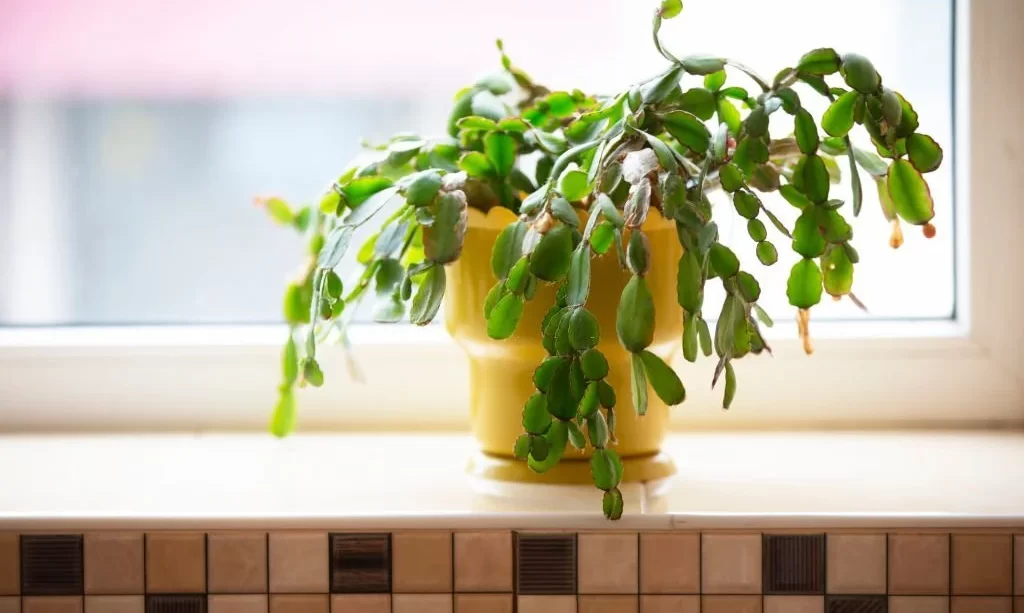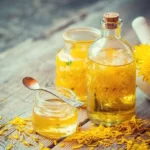The Christmas cactus, with its enchanting blossoms that grace our homes during the holiday season, is a cherished addition to any plant lover’s collection. However, as with any plant, questions and concerns can arise, especially when you notice those telltale signs of leaf drop. In this article, we delve into the mysteries of why your Christmas cactus might be shedding leaves and what you can do to help it thrive.
- SUCCULENT FERTILIZER PROVIDES THE BALANCED NUTRIENT NEEDS OF YOUR SUCCULENTS INCLUDING CACTI, JADE, ALOE, AND ALL OTHER SUCCULENTS
- OUR SUPER LOW USE RATE MEANS OUR 8 OUNCE BOTTLE WILL LAST 2X LONGER THAN COMPETITORS
- PROVIDES THE NUTRIENTS NEEDED FOR EXCELENT ROOT GROWTH, COLOR VIBRANCY, BEAUTIFUL BLOOMS AND STEM GROWTH
- LIVE POTTED SUCCULENT PLANTS INDOORS OR OUTDOORS NEED SMALL AMOUNT OF NUTRIENTS FROM EASY PEASY PLANT FOOD TO GROW AND BLOOM HEALTHY
- INSTANTLY FEEDS YOUR LIVE SUCCULENT PLANTS
Natural Leaf Shedding
One of the first things to understand is that your Christmas cactus may be dropping leaves as part of its natural growth cycle. Much like humans shedding old skin cells, these plants shed older leaves to make way for new growth. This process is entirely normal and should not cause undue worry. Typically, you’ll notice the older leaves turning yellow and eventually falling off. It’s a sign that your Christmas cactus is healthy and renewing itself, ensuring a vibrant future.
Watering Issues
Sometimes, leaf drop can be a response to watering habits. Overwatering or underwatering can stress your Christmas cactus and lead to leaf loss. Here’s how these watering issues can affect your plant:
- Overwatering: Too much water can lead to root rot, which not only affects the roots but also stresses the entire plant. The result may be leaves that turn yellow and drop. Ensure that you’re allowing the soil to dry out slightly between waterings, and be cautious not to let the plant sit in water.
- Underwatering: On the flip side, depriving your Christmas cactus of adequate moisture can also cause leaf loss. Dehydrated plants may drop leaves as a survival mechanism. To avoid this, water your cactus when the top inch of soil feels dry, ensuring a consistent watering routine.
Balancing your watering routine is key to preventing leaf drop caused by water-related issues. In the following sections, we’ll explore other factors like temperature, lighting, and nutrition that can also influence your Christmas cactus’s leaf health.
- 100% NATURAL: Hand-blended custom mixture, no artificial ingredients
- USES: for planting, repotting, and growing healthy Christmas Cacti, for indoor / outdoor container gardening; also ideal for Thanksgiving Cactus and Easter Cactus
- Benefits: aeration, drainage, nutrient retention, pH balance & much more
- Ingredients: Peat moss, pine bark, pumice pieces, worm castings, horticultural perlite, lime
- Size: 4 quarts (enough tor three 6-inch pots)
Temperature and Lighting
Your Christmas cactus’s environment plays a significant role in its leaf health. Fluctuations in temperature and inadequate lighting can lead to leaf drop:
- Temperature: Christmas cacti thrive in stable temperatures. Exposure to drafts or extreme temperature fluctuations can stress the plant, causing leaves to drop. Keep your cactus away from cold drafts and ensure a consistent, moderate temperature. Avoid placing it near radiators, heaters, or air conditioning vents.
- Lighting: Insufficient or excessive light can also impact leaf health. While Christmas cacti don’t require direct sunlight, they do need bright, indirect light. Too much direct sun can scorch the leaves, while too little light can weaken the plant. Find a spot with bright, filtered light, and consider rotating the pot to ensure even growth.
Fertilizing and Nutrient Deficiency
Fertilization is essential for your Christmas cactus’s overall health. Nutrient deficiencies, particularly in key minerals like magnesium and iron, can result in leaf discoloration and loss:
- Nutrient Deficiency: A lack of essential nutrients can cause leaves to turn yellow or even white before dropping. To prevent this, use a balanced, water-soluble fertilizer formulated for houseplants. Follow the recommended dosage and schedule to ensure your cactus receives the nutrients it needs.
Pest Infestations
Pest infestations can weaken your Christmas cactus and lead to leaf drop. Common pests like spider mites and mealybugs can be particularly troublesome:
- Spider Mites: These tiny pests can damage your plant by sucking out its juices. Infested leaves may become stippled, discolored, and eventually drop. Inspect your cactus regularly, and if you spot spider mites, treat the plant promptly with a gentle insecticidal soap or neem oil.
- Mealybugs: Mealybugs are another common menace. They feed on your cactus’s sap, leading to wilting and leaf loss. Use a soft brush or cotton swab dipped in alcohol to remove mealybugs, and keep a close eye on your plant to ensure they don’t return.
Understanding and addressing these factors—temperature, lighting, nutrition, and pests—can help prevent leaf drop and keep your Christmas cactus thriving. In the upcoming section, we’ll explore potential root issues that may also contribute to leaf loss and how to address them.
Root Issues
The health of your Christmas cactus’s roots is fundamental to its overall well-being. Root-related problems can contribute to leaf drop and should not be overlooked:
- Overcrowding: Over time, your Christmas cactus may outgrow its pot, leading to overcrowded roots. This can restrict the plant’s access to water and nutrients, causing stress and leaf loss. Repotting your cactus into a slightly larger container with fresh, well-draining soil can alleviate this issue.
- Damaged Roots: Root damage from improper handling or physical trauma can compromise your cactus’s ability to absorb nutrients and water. Inspect the roots when repotting, and trim away any damaged or rotting sections. Repotting into fresh soil can help the plant recover.
Remedies and Preventive Measures
While addressing specific issues is crucial, preventive care and general remedies can help maintain the health of your Christmas cactus:
- Regular Inspection: Periodically inspect your plant for signs of stress, pest infestations, or root issues. Early detection allows for prompt intervention.
- Balanced Watering: Establish a consistent watering routine, allowing the top inch of soil to dry out between waterings. Ensure proper drainage to prevent overwatering.
- Appropriate Lighting: Place your cactus in a spot with bright, indirect light. Shield it from direct sunlight, which can harm the leaves.
- Fertilization: Feed your Christmas cactus with a balanced, water-soluble fertilizer during the growing season, following the manufacturer’s instructions.
- Pest Prevention: Maintain a pest-free environment by regularly cleaning the plant’s surroundings and inspecting for potential invaders.
- Repotting: When necessary, repot your Christmas cactus into a slightly larger container with fresh soil to prevent root overcrowding.
Conclusion
The sight of a Christmas cactus dropping leaves can be a cause for concern, but armed with knowledge and proactive care, you can help your beloved plant thrive once more. Remember that some leaf loss is part of the natural growth cycle. However, by addressing issues related to watering, temperature, lighting, nutrition, pests, and root health, you can minimize stress on your cactus and ensure a lush, vibrant display of leaves and blossoms for many holidays to come.
With a little TLC and attention to its needs, your Christmas cactus will continue to be a delightful and cherished addition to your home, gracing your festive season with its timeless beauty.






